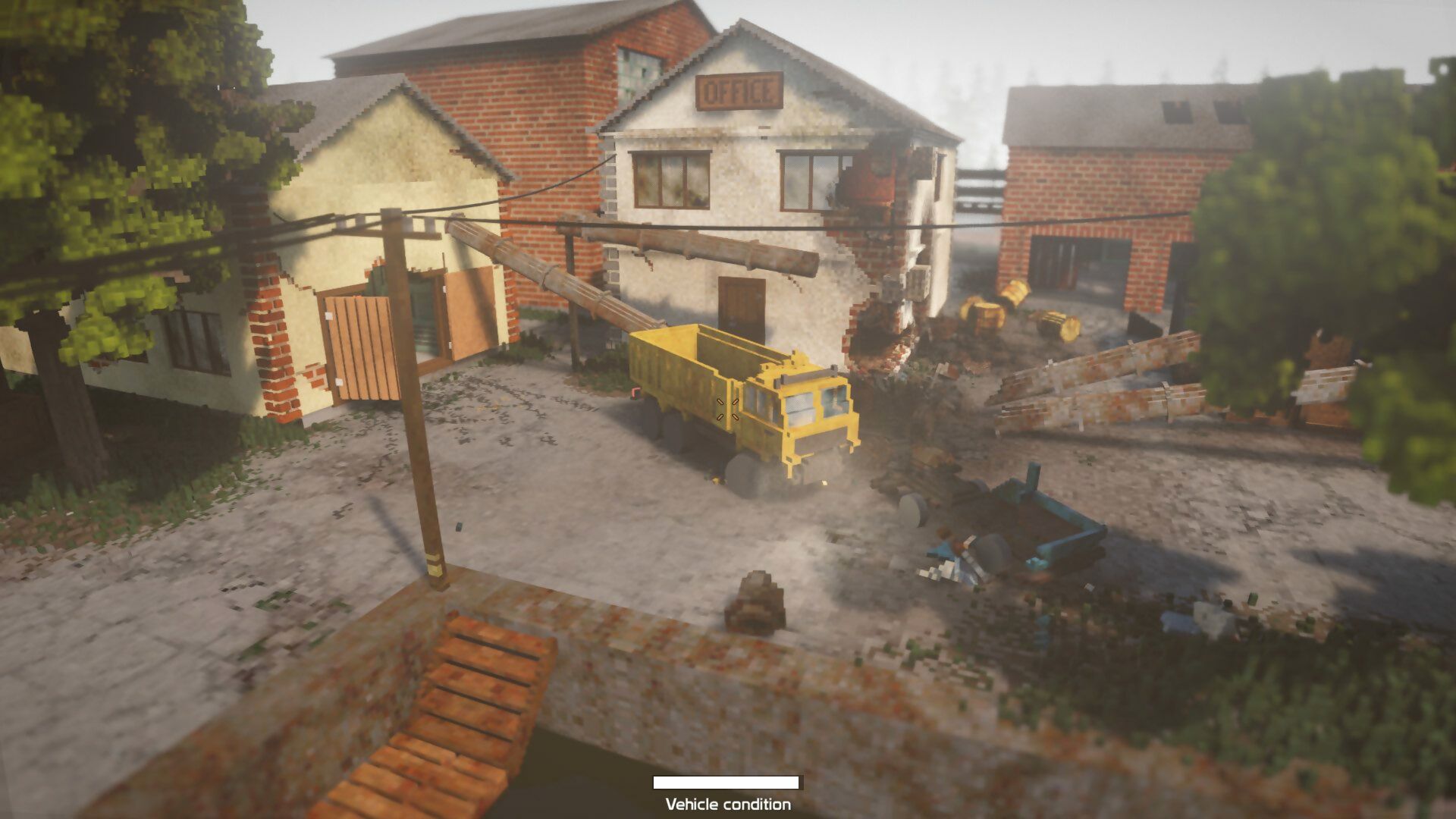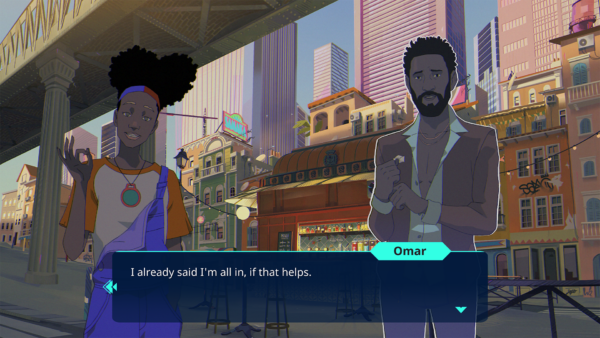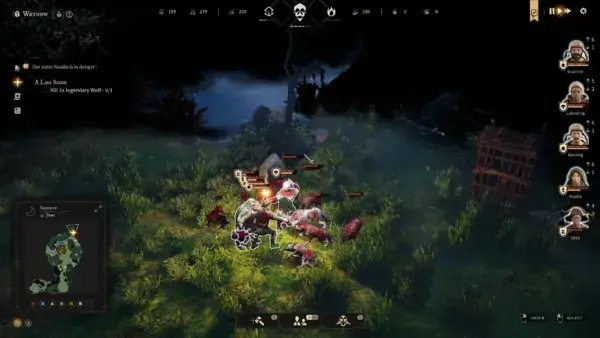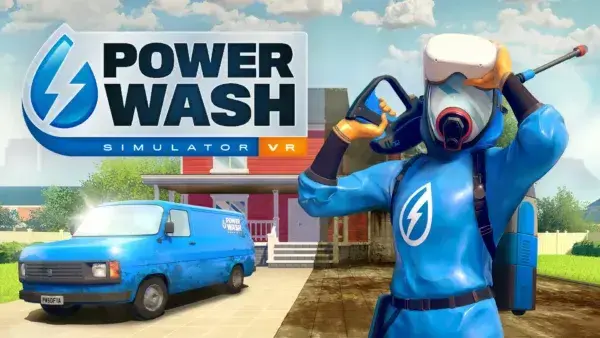
The satisfying splinter of glass. The pleasing way walls break apart a layer at a time, with plaster falling off to reveal bricks, which in turn crumble into tiny cubes with each strike of your sledgehammer. This doesn’t happen every day, but we watched the trailer for Teardown and immediately thought, ‘We want to play this. Right now.’
The work of Swedish developer Dennis Gustafsson, Teardown presents a potentially intoxicating mix of wanton destruction and problem-solving. Each level presents a voxel-based sandbox that involves planning and then carrying out a series of heists against the clock. Just about every element in Teardown’s contained spaces can be damaged or smashed up in some way; you can fire a gun at a power line and watch the whole thing collapse, knock a hole in a wall with a stick of dynamite, or throw a desk through a window and admire the messy results.
There’s a point to all this property damage, though: once you start stealing the items you need to complete each level, a timer will kick in, and you’ll have only a few seconds to grab everything and escape before a security team arrives. It’s vital, then, that you make the path between each item you want to steal as straight as possible, which means the game involves several minutes of knocking down walls, creating makeshift walkways and shortcuts by moving around furniture, planks of wood, or even vehicles, before you spend the second phase rushing around, stealing items against the clock.

Part of Teardown’s appeal is the open-ended nature of missions. “Anything is allowed as long as you get the job done,” Gustafsson says.
In a gameplay video Gustafsson uploaded in early October, the level’s objective is to steal a series of keycards from what looks like an industrial estate; later stages will, however, feature other objectives and items to steal. “Most levels will feature the same two phases of planning and running,” Gustafsson tells us, “but there will be a lot of variation in the actual goal. One mission might, for instance, be to destroy objects instead of stealing them. This may sound similar, but plays very differently because if you do your planning right, you don’t have to be physically close to a target in order to destroy it.”
All of this might make Teardown sound like a 3D puzzle game – a gleefully anarchic riff on Portal, perhaps – but Gustafsson classifies it rather differently. “I think a puzzle game should have one or several designed solutions, which Teardown won’t have,” he tells us. “We specifically try to design levels with no particular solution in mind and leave all of that to player creativity. I see it more as an action platformer with
build-your-own-level elements in the sandbox phase.”

Teardown’s ray-traced lighting gives the voxel world a pleasingly realistic look, and won’t require an RTX graphics card to run.
Gustafsson has a long history in the game physics field – Meqon, a company he co-founded in 2001, specialised in developing simulation middleware – and the idea for Teardown began to evolve from some physics-based ideas he was tinkering with about 18 months ago. Although Gustafsson knew he wanted to create a sandbox game that “used destruction for gameplay,” he also knew he didn’t want to make a first-person shooter. “A lot of people see a shooter as the perfect application for this technology, but I personally have no interest in shooters, and I also don’t think the destruction and physics would really affect gameplay that much,” Gustafsson says.
To create Teardown’s smash-happy world, Gustafsson has built his own physics and graphics engines, with ray-traced lighting that, although fairly processor-hungry, won’t require an expensive new RTX graphics card to run. This makes the game’s hazily-lit, destructible world look good enough to eat – but it’s also given Gustafsson more than a few technical hurdles to clear in order to get the game to this stage. “One major challenge is that there aren’t a lot of voxel editing tools out there, so the content creation pipeline is not as smooth as I would like,” he says. “Everything has to be modelled on the inside, which can be quite challenging. In a polygon game, you just deal with the surface, but since everything is procedurally destructible here, each object needs an inside, with its own materials.”

As well as destruction, Teardown’s also about efficiency: once a level’s finished, you can view a map to see how you can complete it more quickly next time.
There are limits to Teardown’s voxel destruction, too – partly to prevent the game from becoming unplayably broken. You’ll be able to blast the wheel off a truck, for example, but its handling will remain the same if you try to drive it. Similarly, the damage modelling on buildings has been simplified so that a roof won’t collapse until everything underneath it has been destroyed. “This can look a bit weird at times,” says Gustaffson, “but it can also be beneficial to the player that the behaviour is predictable, since destruction is used for gameplay. If the roof started falling in when you destroyed some random support beam by mistake, that would likely be very confusing and hard to work with.”
Visit Gustafsson’s Twitter feed, and you’ll uncover a joyous carnival of destruction: a video shows a construction vehicle tearing the back off a car, turning it into a makeshift pickup truck. Another clip shows how you can knock down a telegraph pole, attach it to a lorry, then drive off, stretching the electricity cables like elastic. It looks ready to play already, though Gustafsson says there’s more to do before the game’s debut on Steam Early Access next year. “The basic engine and toolset is there, but needs a lot of polish and optimisation. I’m working on vehicles right now,” he says. “They’ll have a central role in the game: regular cars, construction machines, and boats. Most of all, there’s a lot of content to be created. I hired several level designers to help me with that so things are moving a little faster than before, but we really just got started, so there’s a lot of work to be done.”

Teardown will need a fairly decent PC to run; Gustafsson says it plays fine on a machine with a GTX 1070 graphics card and a quad-core processor.
The future: voxel-shaped?
“I think we’ll see more voxel games in the next few years, but I don’t think they will replace polygons any time soon,” Gustafsson says, when we ask him what he thinks about the future of voxels. “Polygons are a pretty good representation for 3D objects unless you need to model the inside, so I don’t see them completely going away. Voxel destruction is a lot of fun, but completely destructible worlds are probably a bad fit for most games since they affect level design and gameplay in unpredictable ways. It can quickly become a nightmare scenario for both game design, level design, and testing. I think voxels will be used mostly for niche games and maybe for sampling real-world objects. There are a few companies doing cool stuff with really small voxels – Atomontage and Mutate primarily – and it will be interesting to see what they will do with the technology.”





